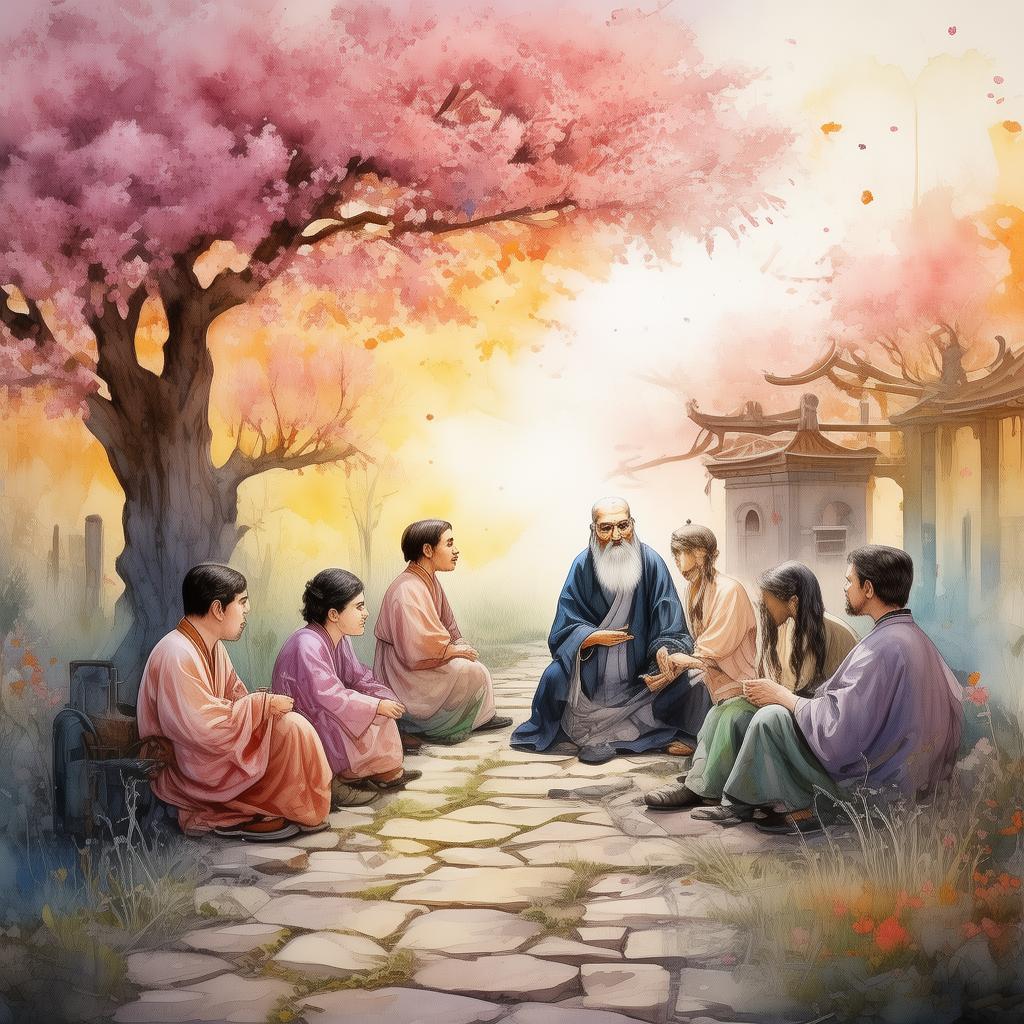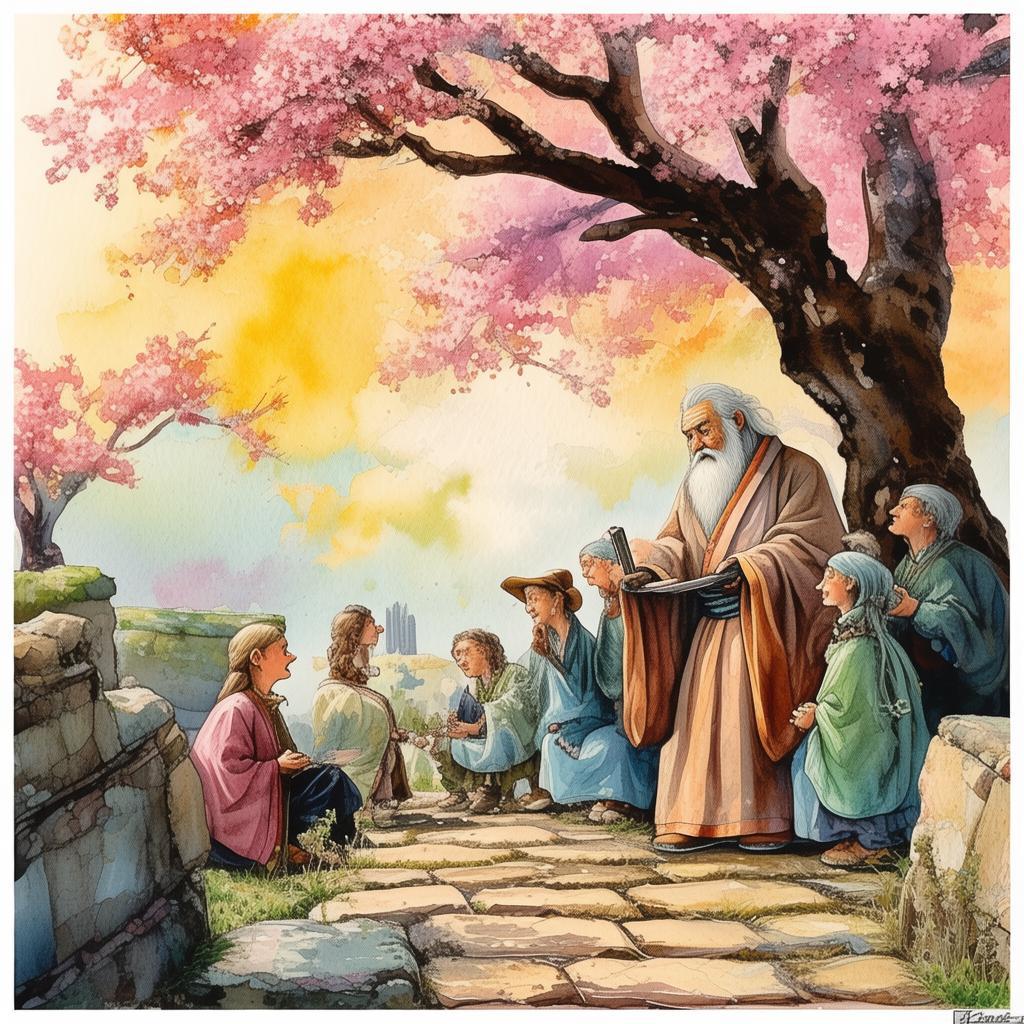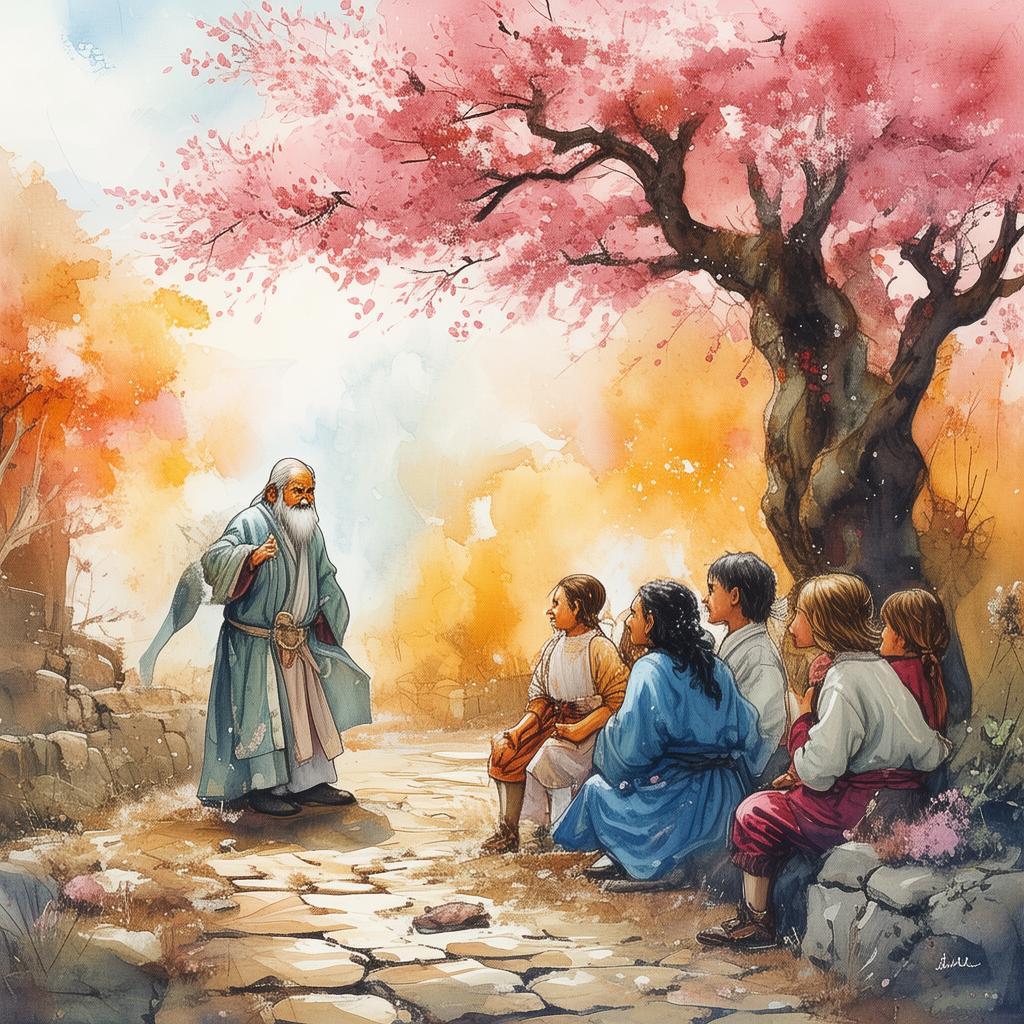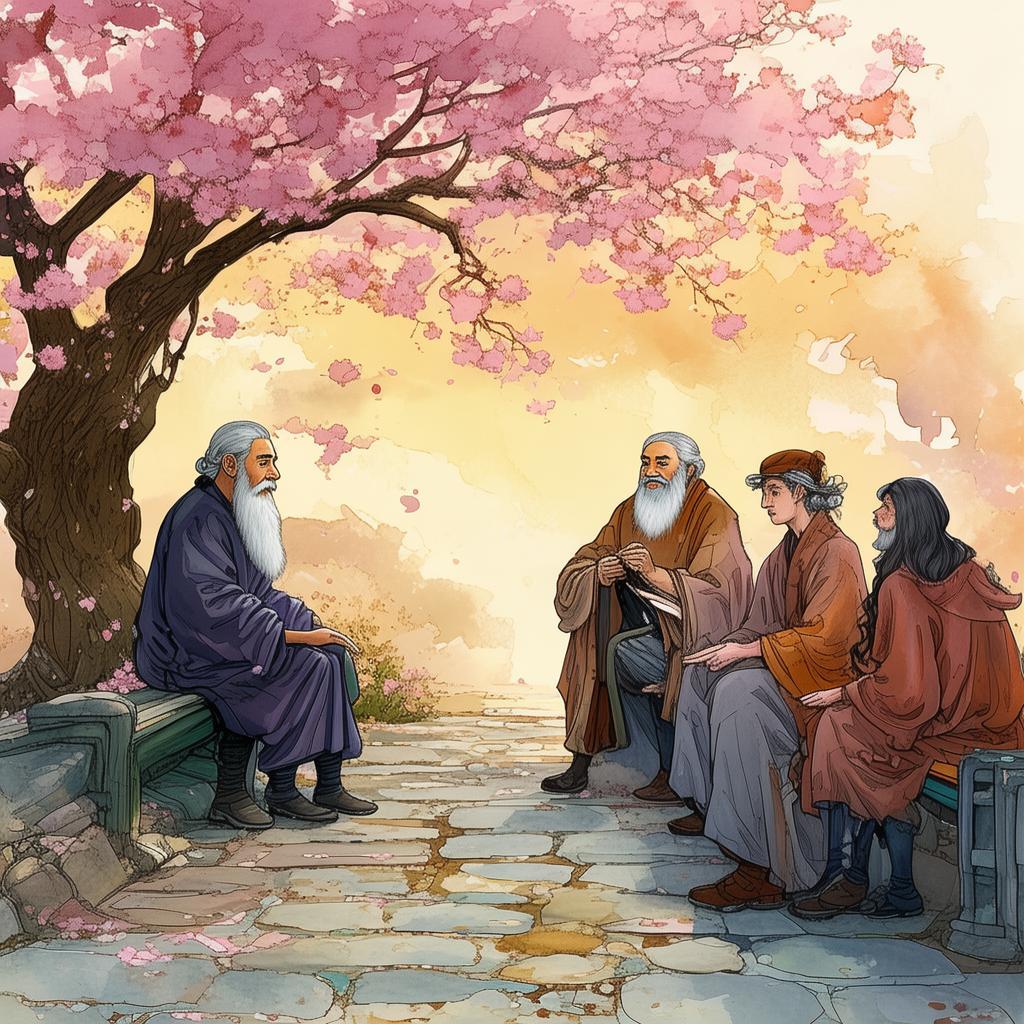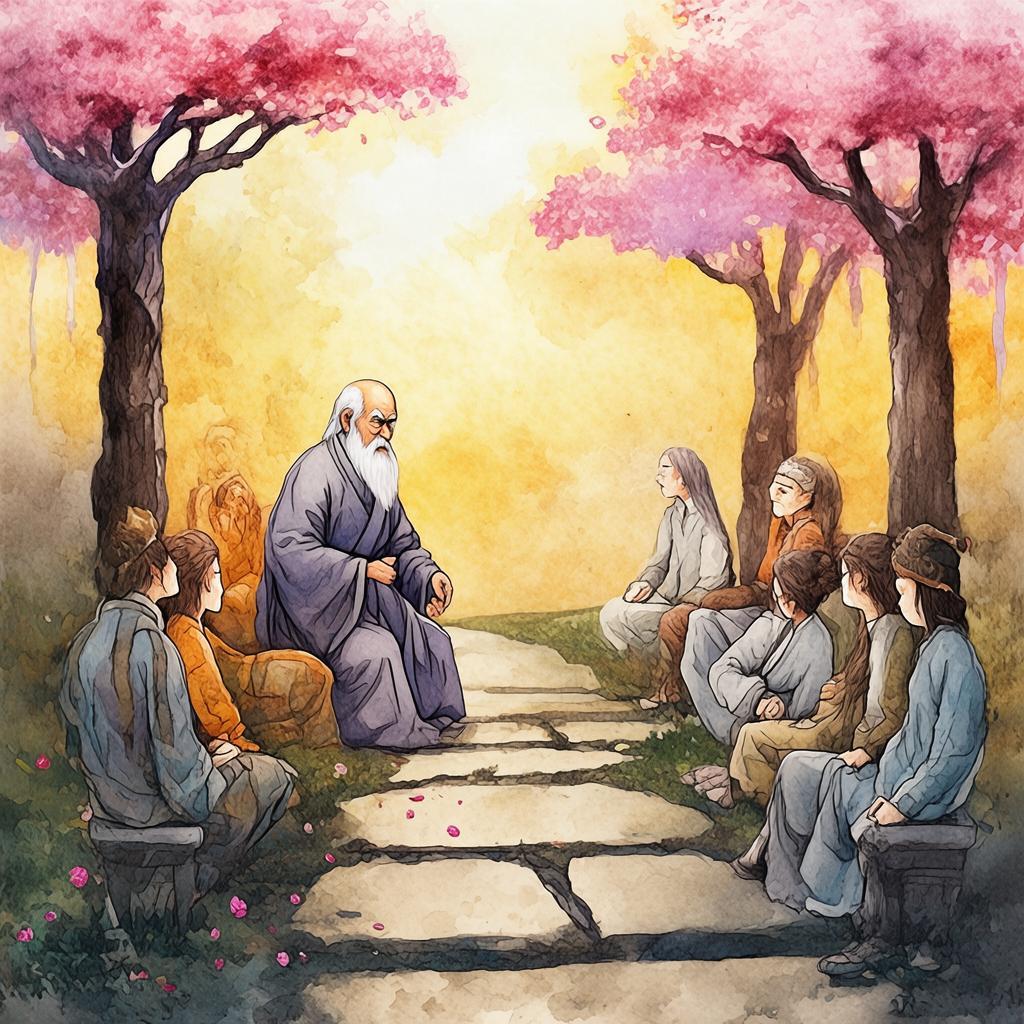Unveiling the Labyrinth of Compassion: A Silk Road Healer's Test of Faith
In the heart of the ancient Silk Road, where caravans of spices, silks, and tales crossed paths, there lived a healer known far and wide for his miraculous cures. His name was Han Ming, a man of great wisdom and gentle heart, whose touch could heal the deepest wounds and whose words could soothe the angriest souls.
One fateful day, as the sun dipped below the horizon, casting a golden glow over the rolling dunes, a message reached Han Ming. It spoke of a labyrinth in the remote reaches of the desert, a place where the balance between good and evil had been disturbed, and where the sick and the suffering were left to perish. The message implored Han Ming to venture into the labyrinth, to restore the harmony that had been lost, and to bring healing to those who had been forsaken.
Han Ming, ever the compassionate soul, accepted the challenge. With his pack of herbs and his heart full of hope, he set out on a journey that would test his resolve and his faith to the very core.
As he entered the labyrinth, Han Ming found himself in a place of surreal beauty and terror. The paths twisted and turned, leading him through caverns filled with echoes of the past and deserts that stretched to the heavens. The air grew thick with the scent of strange flowers and the sound of strange creatures that seemed to whisper secrets of the soul.
In the heart of the labyrinth, Han Ming encountered the Guardian of the Balance, a being of immense power and compassion. The Guardian explained that the labyrinth was a place of trials, where only those with true heart and purpose could pass. Each path represented a different aspect of healing, and each trial was a test of Han Ming's faith in his own abilities and in the power of compassion.
The first trial came in the form of a young girl with a broken spirit, her eyes hollowed by sorrow and her body wasted by a disease that no man had been able to cure. Han Ming, feeling the weight of the girl's suffering, reached out to heal her, but the disease proved to be more than a physical ailment. It was a curse, woven from the girl's deepest fears and despair. With a newfound understanding, Han Ming sat with the girl, listening to her story, and offering his empathy rather than his herbs. As the girl spoke, her spirit began to mend, and the curse faded away.
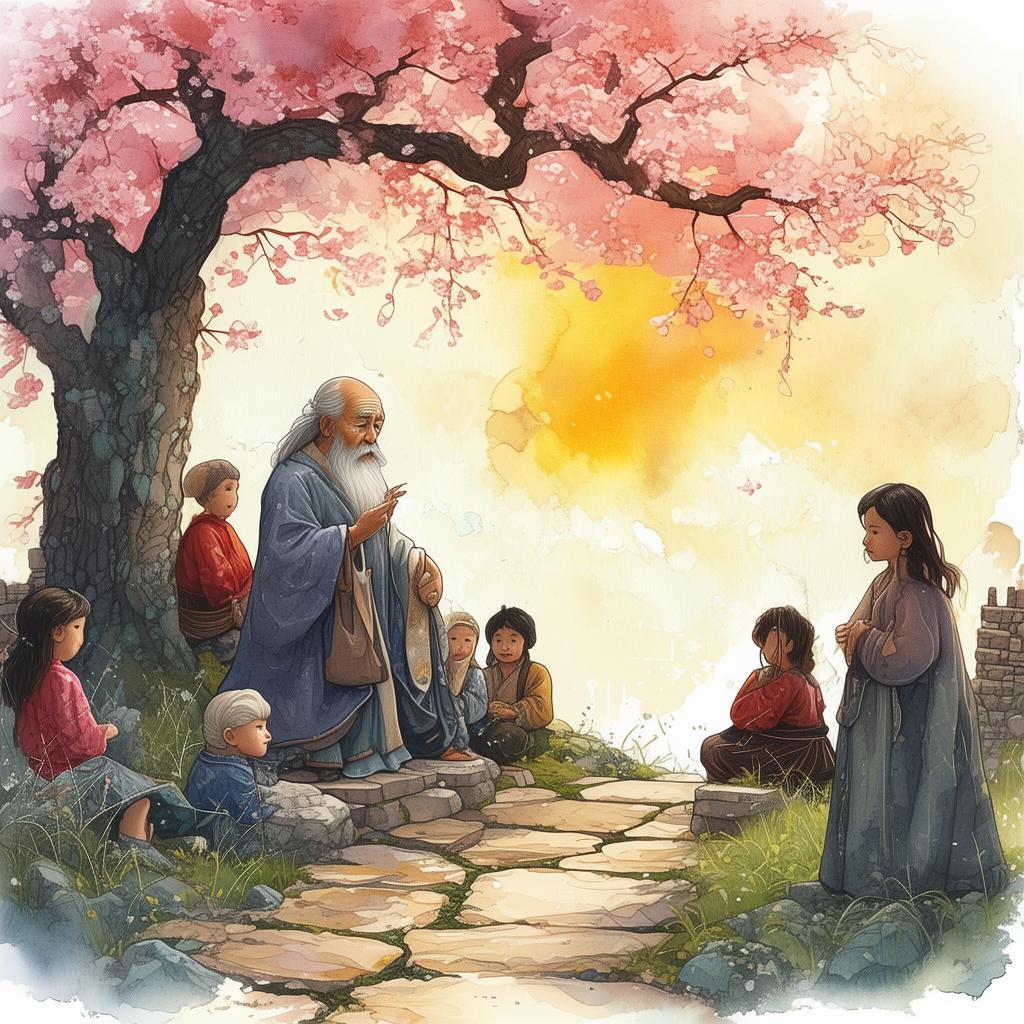
The second trial was a man who had been driven mad by the loss of his family in a desert storm. He saw them everywhere he looked, in the wind, in the shadows, and in the stars. Han Ming, recognizing the man's plight as a reflection of his own vulnerability, decided to confront the specters head-on. He taught the man how to find solace in the silence of the desert, how to listen to the whispers of the wind that were, in fact, the voices of his ancestors guiding him through his pain.
The third trial was the most challenging of all. A young woman, her body ravaged by a disease that was as mysterious as it was fatal, lay in the center of the labyrinth. She was a woman of great beauty and strength, but her spirit was waning. Han Ming knew that he had to find a way to heal her, not just physically, but also to restore her will to live.
In a moment of clarity, Han Ming realized that the woman's disease was not just a physical illness but a reflection of her inner turmoil. She had been poisoned by the bitterness of her past, by the fear of the future, and by the pain of lost love. With a newfound sense of purpose, Han Ming approached the woman and began to heal her with words. He spoke of the beauty of life, the joy of love, and the endless possibilities that lay before her. As his words reached her soul, the woman's spirit began to rise, and the poison in her body started to dissipate.
As the trials unfolded, Han Ming discovered that the labyrinth was not just a place of trials, but a place of growth and transformation. He learned that true healing was not just the act of curing a disease, but the act of restoring hope, of mending spirits, and of nurturing the human heart.
In the end, Han Ming emerged from the labyrinth not as a healer who had cured the sick, but as a man who had healed his own soul. He realized that the true power of healing lay not in herbs and potions, but in compassion, understanding, and the profound connection between healer and patient.
Han Ming returned to the Silk Road, his heart lighter and his spirit renewed. He carried with him the wisdom of the labyrinth, the lessons of the trials, and the knowledge that true healing was a journey that required both the hands and the heart. And as he journeyed on, his legend grew, and the Silk Road thrived once more, a testament to the power of compassion and the enduring spirit of a healer who had found his true calling.
✨ Original Statement ✨
All articles published on this website (including but not limited to text, images, videos, and other content) are original or authorized for reposting and are protected by relevant laws. Without the explicit written permission of this website, no individual or organization may copy, modify, repost, or use the content for commercial purposes.
If you need to quote or cooperate, please contact this site for authorization. We reserve the right to pursue legal responsibility for any unauthorized use.
Hereby declared.
